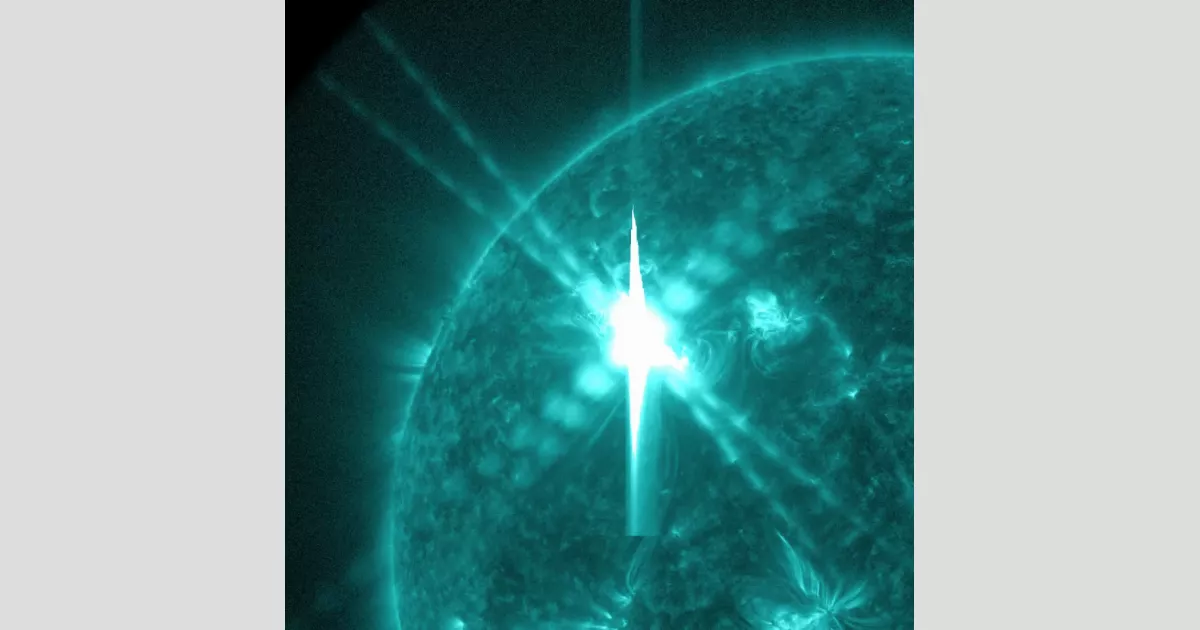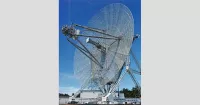Solar flares are intense bursts of electromagnetic radiation emanating from active regions in the Sun's atmosphere. These localized emissions are frequently associated with other solar events, such as coronal mass ejections and solar particle events. The frequency of solar flares fluctuates according to the Sun's 11-year solar cycle.
1942: British Radar Operators Observe Solar Emission
On February 25 and 26, 1942, British radar operators observed radiation interpreted as solar emission by Stanley Hey. This discovery remained unpublicized until the end of World War II. In the same year, Southworth also observed the Sun in radio, but these observations were only known after 1945.
1943: First Radioastronomical Observations of the Sun
In 1943, Grote Reber was the first to report radioastronomical observations of the Sun at 160 MHz, revealing new peculiarities of solar activity like storms and bursts related to the flares.
1945: Observations Known After WWII
The observations of the Sun in radio made by Southworth in 1942, as well as the discovery of solar emission by British radar operators in 1942, were only known after 1945, following the conclusion of World War II.
1970: Original Solar Flare Classification System Devised
In 1970, a classification system for solar flares was originally devised, including only the letters C, M, and X to avoid confusion with optical classification systems.
1984: Discovery of Rieger Period
In 1984, Erich Rieger and his coworkers discovered an approximately 154-day period in the occurrence of gamma-ray emitting solar flares, dating back to at least solar cycle 19. This period, now commonly known as the Rieger period, has been confirmed in most heliophysics data and the interplanetary magnetic field.
November 2003: Largest Solar Flare Measured with Instruments
In November 2003, the largest solar flare ever measured with instruments occurred. The event saturated the GOES detectors, leading to an approximate classification, initially estimated at X28 and later revised to X45 based on ionospheric effects. This flare produced the first clear evidence of a new spectral component above 100 GHz.
2024: Limited Research on Solar Flare Effects on Mercury
As of 2024, research on the effects of solar flares on Mercury has been limited to modeling the response of ions in the planet's magnetosphere.
Trending

2 months ago [TO_BE_ADDED_BY_AI]
3 months ago Colorado I-70 Traffic Gridlock: Georgetown Reopens After Leaf-Peeping Blockade and Delays.
2 months ago Jason Clarke stars in 'The Last Frontier,' an Alaskan adventure series on Apple TV+.

1 month ago Ubisoft's Anno 117 includes AI art placeholder; Fans react negatively.

28 days ago IAEA Conducts Safety Assessment Mission at Chernobyl Nuclear Power Plant; 50th Rotation Completed.
8 months ago Trump Denies Arkansas Tornado Relief: Sanders Appeals; Victims Blocked from Aid
Popular

XXXTentacion born Jahseh Dwayne Ricardo Onfroy was a controversial yet...

Ben Shapiro is a prominent American conservative political commentator media...

Candace Owens is an American conservative political commentator and author...

William Franklin Graham III commonly known as Franklin Graham is...

Tucker Carlson is an American conservative political commentator known for...
The Kennedy Center Honors are annual awards recognizing individuals and...



